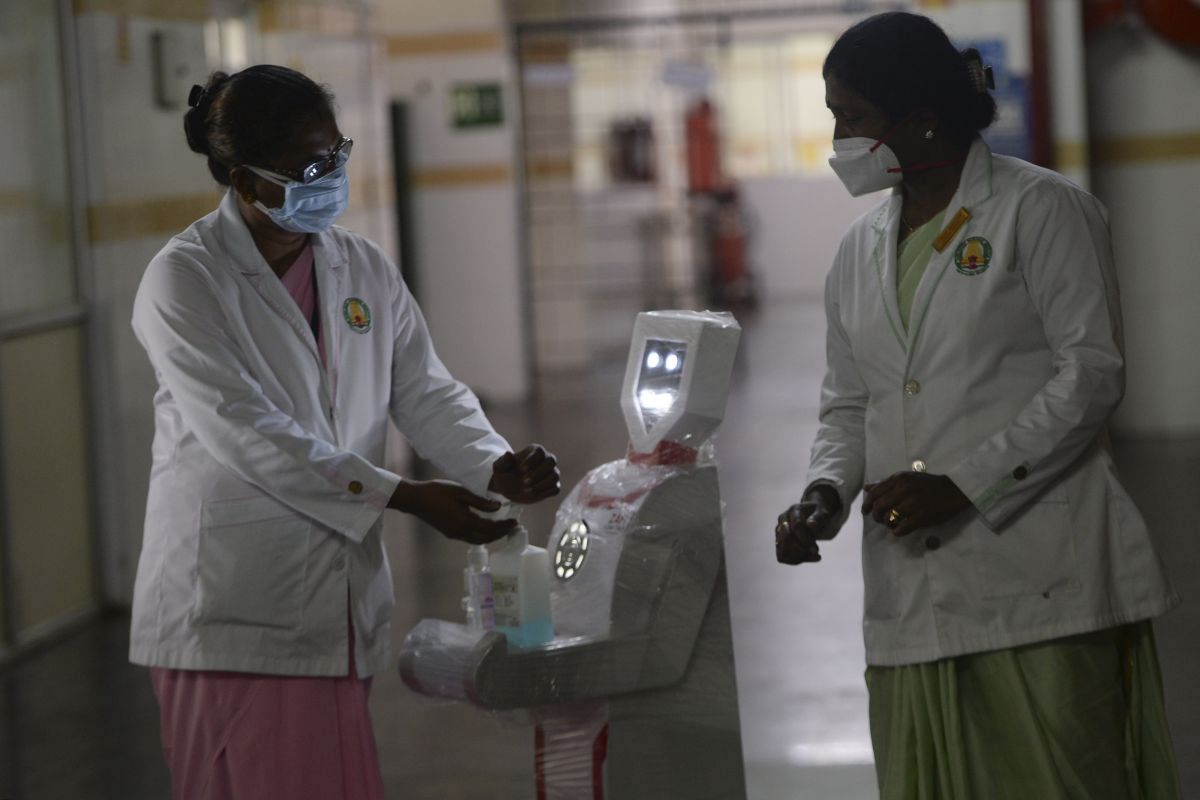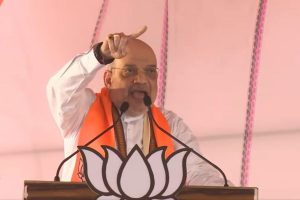Since the beginning of civilization women as much as men have always worked, but in pre-industrial societies their work was within their homes and was often seasonal. But as women did not contribute to the production process, they were considered unequal and inferior. Their lifestyle and status however underwent momentous changes following the Industrial Revolution that saw a shift from household units to machine-based factories.
This alongside the rise of cities not only separated work from home, men’s work from that of women but also threw up the notion of man as the breadwinner relegating a wealthy woman to idleness and a poor woman to low-paid jobs. The two World Wars, however, disrupted the notion of man as the main and often the only breadwinner and women as housewives.
Advertisement
In 1914 in Britain, women took up jobs in factories and industries as men of working age went to the warfront. In that year 23.6 per cent of women worked but predominantly in jobs that were considered woman- only occupations which included dress-making, sewing, lace-making, confectionery and the like. By the time the First World War ended in 1918, women comprised 46.7 per cent of the labour market and of these, 40 per cent of all women were married.
Jobs that were considered exclusively women’s jobs shrunk commensurately by 14 percent. During the War, women entered, for the first time, white-collar jobs and professions. With women experiencing economic independence as a result of opening of the job market and professions the fight for basic equality and challenges to patriarchy became possible.
When John Stuart Mill (1806- 73) decided to move the first resolution in the British House of Commons for women’s suffrage in 1866, Florence Nightingale (1820-1910), instrumental in initiating women into the medical profession with the advice that they should reform medicine and not merely earn a living like the overwhelming majority of male colleagues did, refused to sign the petition as she was sceptical of the benefits of suffrage.
This was despite her belief that representation would ensure freedom but was convinced that women could solve their problems by hard work and perseverance. Subsequently, Nightingale acceded to Mill’s argument of the need to make women equal political partners with men for them to have control over their lives. She supported his signature campaign in 1868 and was the first to sign the petition.
She also became an active member of the National Society for Women’s Suffrage. Despite the women’s suffrage movement beginning in the 1850s it was only after the end of the First World War that women above 30 years of age in Britain secured the right to vote. James Joll notes “it took the experiences of 1914-18 to make the movement a successful one; the contributions of women to the war effort and their obvious ability to do jobs hitherto regarded as men’s work made a telling argument”.
Women, politically invisible till then, became visible with a voice for the first time in the public domain. Men above 21 years of age, irrespective of property ownership also secured the right to vote thereby transforming the liberal state into a liberal democratic one. During the Second World War, women in the age group of 20 to 30 were conscripted for war work and services. By mid-1943, 90 per cent of single women and 80 per cent of married women were employed in essential war efforts.
Once the War ended women did not go back to their homes as they did in 1918 as there were diverse opportunities following the establishment of a cradle to introduce the welfare state with a system of social insurance to all citizens regardless of their income. The notions of domestic bliss and domesticated mothers was busted as myths by Friedan in her Feminine Mystique (1960).
Friedan supported women for wanting to combine home with a career. Since the mid-20th century occupations once considered exclusively male began to open up for women. Women became increasingly visible in the corridors of power and decision-making. However, they still face discrimination and exploitation, continuing violence, unequal pay for equal work and gross inequalities in domestic and child-rearing responsibilities.
This has become more evident ever since the outbreak of the global coronavirus pandemic. The World Health Organization reports that though 70 per cent from 104 countries of health and social care workers and on the frontlines in the fight against Covid-19 are women, they earn 11 per cent less than men with similar responsibilities.
The International Labour Organization (ILO) reports that women perform 76.2 per cent of total hours of unpaid care work, more than three-times as much as men and this figure rises up to 80 per cent as far the Asia-Pacific region is concerned. With health care systems stretched globally because of the present crisis, women’s burden increases in view of the fact that many persons with Covid-19 will have to depend on care at home itself.
This also puts them at greater risk of becoming infected. Women’s child care responsibilities have increased, according to the United Nations Educational, Scientific and Cultural Organization (UNESCO) in view of the shutdown of childcare centres and schools as a result of complete and localised lockdown in 15 and 14 countries respectively.
Another unintended consequence of closure of schools has been the strain on the health system with many medical professionals finding it difficult to find childcare. A report in the New York Times (18 April 2020) states that in the United States “from the cashier to the emergency room nurse to the drugstore pharmacist to the home health aide taking the bus to check on her older client, the soldier on the frontlines of the current national emergency is most likely a woman”.
Many of these jobs are generally performed by women who are non-white. These jobs, one in three are designated as ‘essential’ but are “undervalued” according to Tithi Bhattacharya, as it is done mostly by women and the latter do it because it is undervalued. Furthermore, those who are poor and in jobs that cannot be done from home and without paid leave, like domestic helps are the most vulnerable.
Interestingly, countries that have reported low death counts are those that are led by women heads of state or government ~ Bangladesh, Denmark, Iceland, Finland, Germany, New Zealand, Norway and Taiwan. These leaders, according to Wittenberg-Cox, have demonstrated responses that are decisive, serious, calm and clear unlike their male counterparts who have blamed others, imposed severe lockdowns neglecting the citizens’ day-today concerns, demonizing journalists or projecting themselves in the words of Louis XIV ~ “I am the state. After me the deluge’.
Angela Merkel of Germany ordered large-scale testing in the initial stage. Tsai Ing Wen of Taiwan has put in place 124 measures to block the spread without resorting to lockdowns. She has also sent about 10 million face masks to the United States and Europe. Jakobsdóttir of Iceland has ordered free testing for all citizens and instituted a thorough tracking system without resorting to lockdown or closure of schools. Marin of Finland has relied on social media influencers to spread the message.
Arden of New Zealand took measures and that have minimised the number of cases. Both Solberg of Norway and Friederiksen of Denmark have held short press conferences exclusively for children to assure them and educate them about the pandemic. Begum Hasina in Bangladesh has taken measures to stabilize the commodity market and ensure food security to prevent the possibility of famine like conditions.
In Kerala a state with a population of 35 million and GDP per capita of $ 2900, the 63-year-old health minister, Shailaja Teacher as she is popularly referred to has been described as a ‘coronavirus slayer’ demonstrating according to Spinney “that effective disease containment is possible not only in a democracy, but in a poor one”. Kerala till date has only four deaths due to the virus thanks to decisive and farsighted response.
Moreover the 170,000 people who were quarantined and placed under strict surveillance were regularly visited by health workers at state government’s expense. Today, the figure has shrunk to 21,000. According to Ms Shailaja, the state government has accommodated and is feeding 150,000 migrant workers three meals a day for six weeks since the end of March. Many of these workers are now being sent home on charter trains.
(The writer is Associate Professor in Political Science, Jesus and Mary College, New Delhi)
















